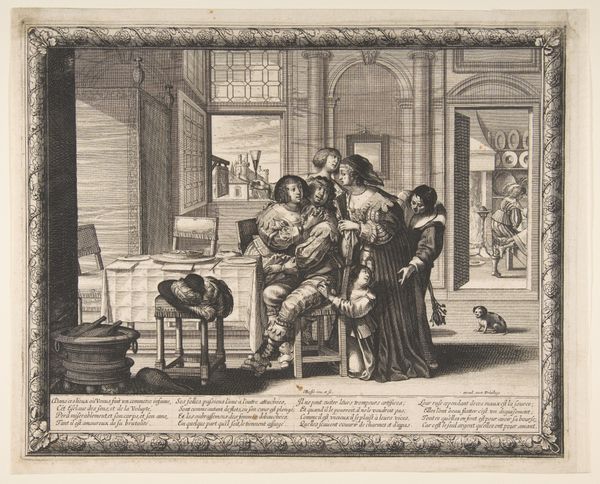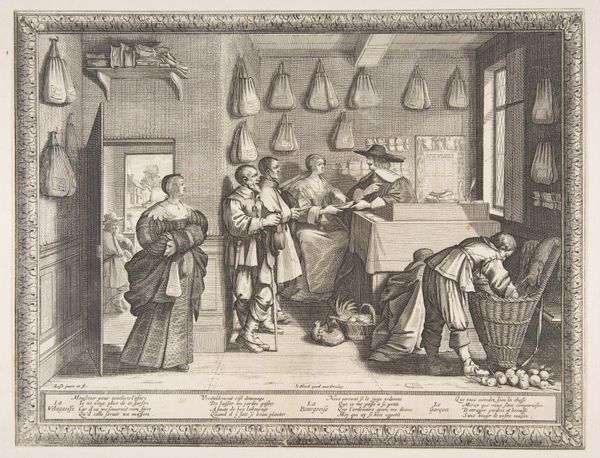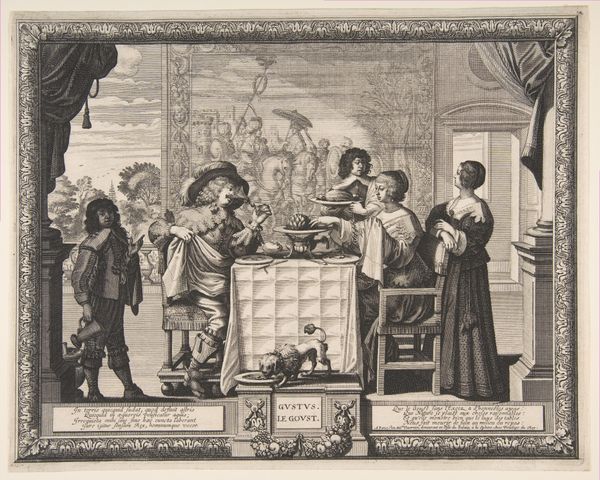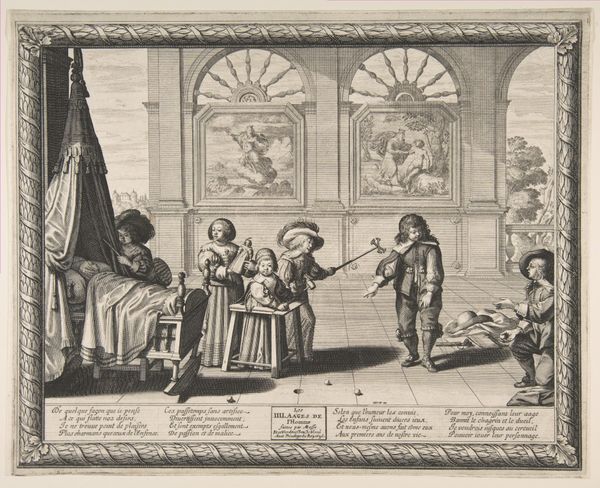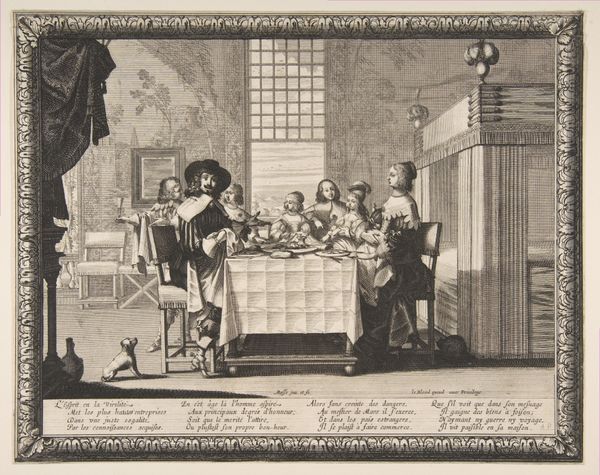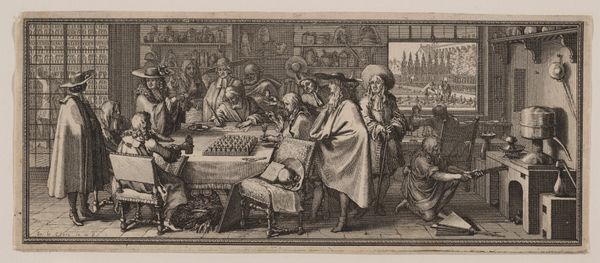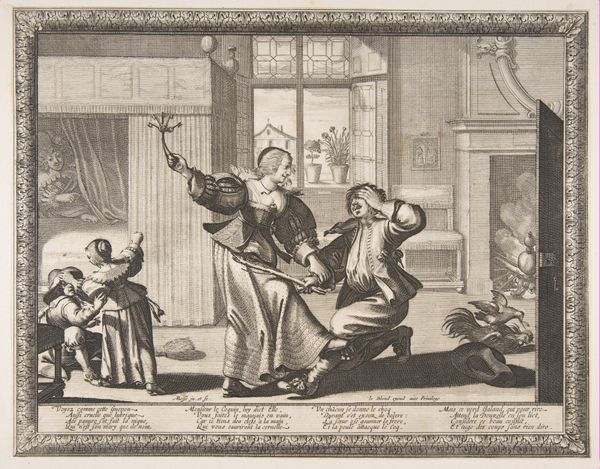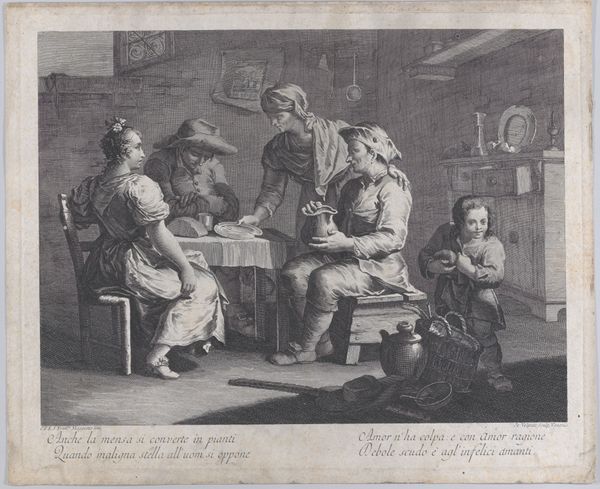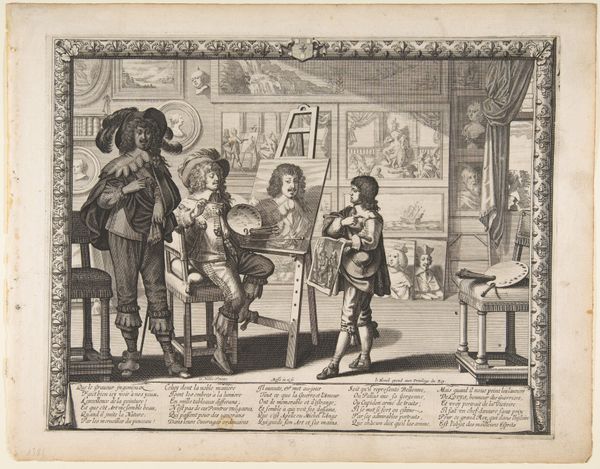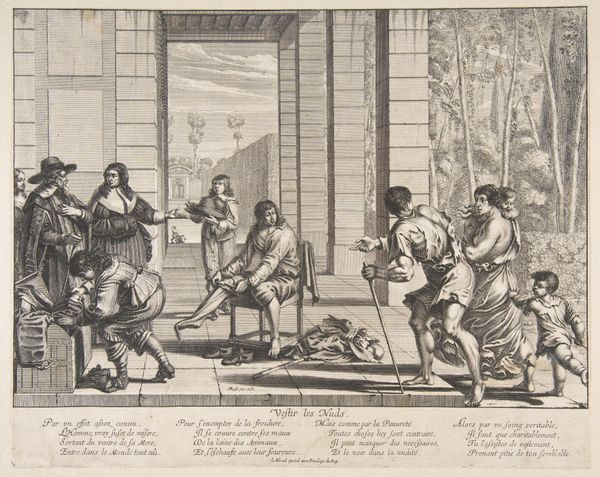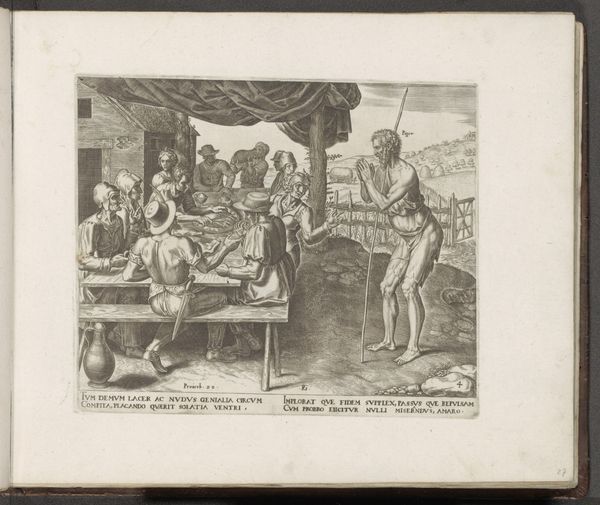
drawing, print, engraving
#
portrait
#
drawing
#
narrative-art
#
baroque
# print
#
horse
#
men
#
portrait drawing
#
genre-painting
#
history-painting
#
engraving
Dimensions: Sheet: 10 1/2 × 13 1/8 in. (26.6 × 33.3 cm)
Copyright: Public Domain
Curator: Here we have Abraham Bosse’s print, "The Prodigal Son Leaves Home," dating roughly between 1631 and 1641. Bosse was incredibly skilled at capturing societal nuances of 17th-century France, wasn't he? Editor: Indeed. And right away, I'm struck by the dichotomy; a sense of abundance inside, a lightness, contrasted sharply with the looming landscape of possible destitution that the son ventures into. It's cleverly sectioned, isn’t it? Curator: It speaks volumes about the visual rhetoric of the time. The "prodigal son" story was a common moral narrative. This work engages with anxieties about inheritance, social mobility, and parental authority. These engravings were meant for a broad audience, often commenting on behavior and moral expectations in a society becoming increasingly materialistic. Editor: Visually, I see the strong diagonal created by the steps leading outward – very dynamic. It contrasts with the more stable, almost frozen scene indoors. It divides the image and it's powerful, highlighting the contrasting spaces. It seems his composition is about juxtaposing static wealth with perilous freedom. Curator: And notice how Bosse uses architecture to represent social space and economic power? The affluent interior and grand colonnade visually communicate the family's status, while the receding landscape beyond speaks to uncertainty. It’s a commentary on the decisions shaping peoples' lives. He is using architecture to provide societal cues for the 17th-century audience. Editor: He's captured so much detail in such a confined space, too. The textures – look at the fabrics indoors compared to the rough attire of the son. His focus on textiles really enlivens the class contrast. Curator: Absolutely. These visual details are key to understanding how early modern artists communicated ideas about social structures. He invites the viewers to place themselves in the moral dilemma that is happening and learn from it. Editor: Looking closer at this work has brought a fresh appreciation of its spatial arrangement and textural interplay. It offers a fascinating contrast to absorb. Curator: I agree; examining the historical context illuminates the societal forces at play in even seemingly straightforward works like this.
Comments
No comments
Be the first to comment and join the conversation on the ultimate creative platform.

